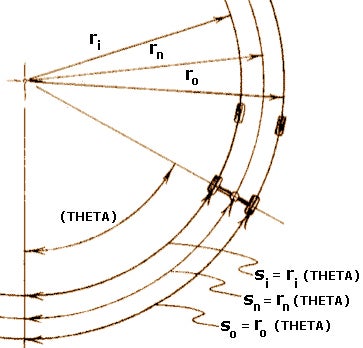
Getty Images
Why did rear wheel drive become standard on cars? originally appeared on Quora: the place to gain and share knowledge, empowering people to learn from others and better understand the world.
Answer by Louis Vaught, Mechanic, on Quora:
Why did rear wheel drive become standard on cars? Primarily it was an issue of missing technology, namely the differential and the CV axle. Both of these are critical to making a Front Wheel Drive (FWD) car operate.
When you turn in a car, it makes a track that looks like this:

If you notice, the outer wheels turn a larger circle than the inner wheels. This means that the outer wheels have to move more quickly than the inner ones.
In early cars, they didn’t really address this problem. Instead, they used a solid axle and just let the outer or the inner wheel slip a little bit. On the rear wheels, this isn’t much of a problem, because your rear wheels don’t control which direction you are turning.
You can’t do this on the front wheels, though. Since your front wheels are steering the vehicle, if they start slipping, you lose control of your turn. So, this early solution wasn’t acceptable for FWD cars.
The way to fix this problem is using a differential. Here is a video about how a differential works to allow one wheel to slip.
Even after we initially developed differentials, this problem still persisted, because the differentials were too large to fit in the front of the car. Effectively, we developed RWD differentials before we developed FWD ones, because there were less constraints on them.
The second issue is a lack of CV joints, which affects power delivery. Since your front wheels turn, you can’t just solidly connect an axle to them. The axle has to be able to flex in the direction that you are steering.
To do this, we now use a CV (Constant Velocity) joint to connect the axle to the wheel. Here is an animation showing how a CV joint works to transmit power and still flex.
When we started making cars, the technology to make CV joints didn’t really exist either. Even as that technology was developed and perfected, for a very long time it made FWD cars prohibitively expensive.
That’s a lot of the reason that the RWD layout was standard for such a long time. FWD has a lot of advantages, but it was a much more challenging engineering problem to solve, and there were some very specific technologies that we had to develop before we could start using that layout.
This question originally appeared on Quora - the place to gain and share knowledge, empowering people to learn from others and better understand the world. You can follow Quora on Twitter, Facebook, and Google+. More questions:
